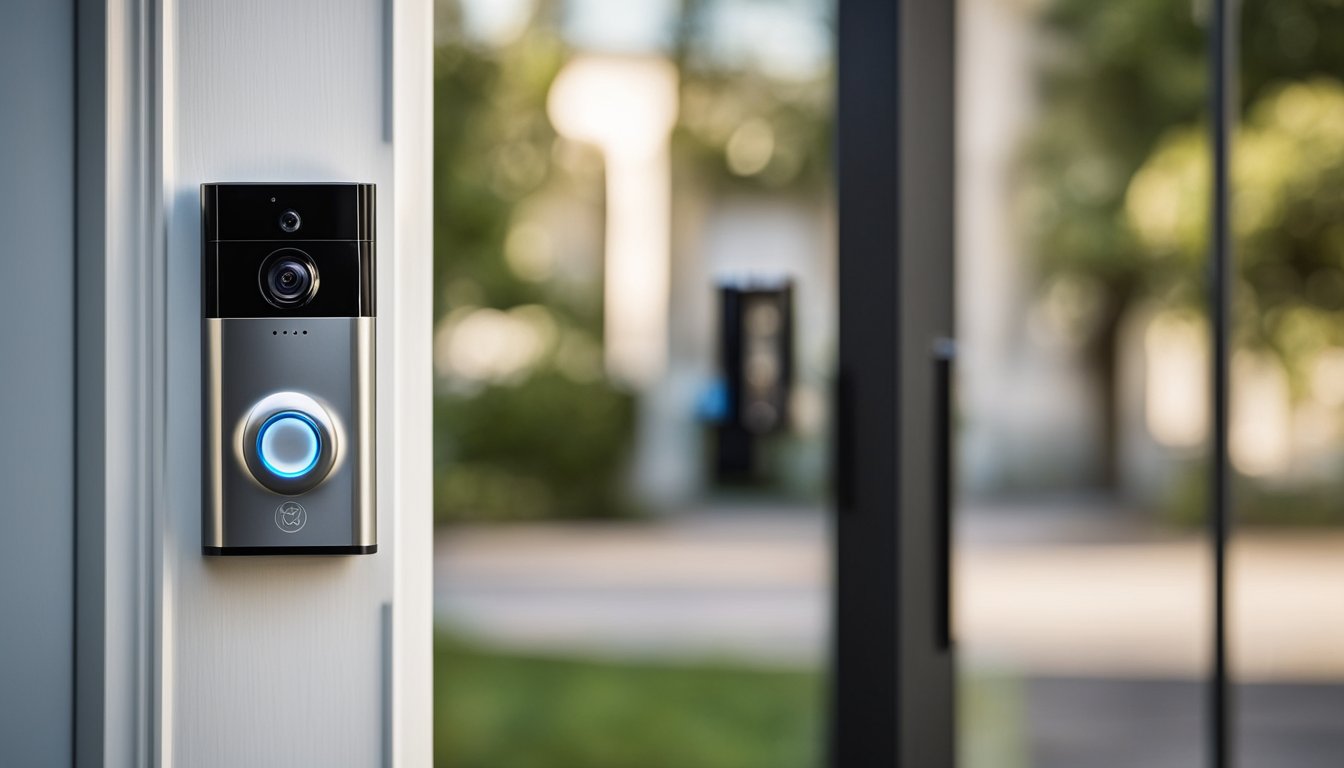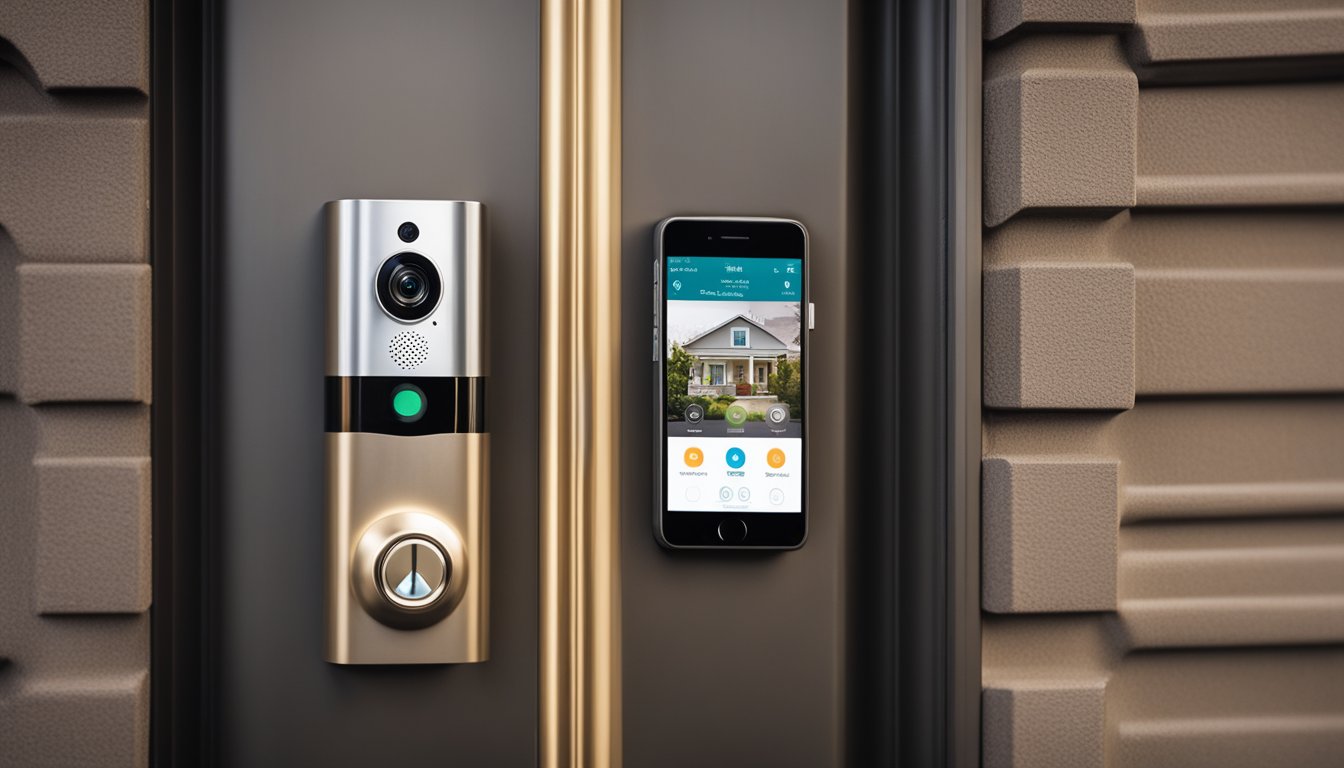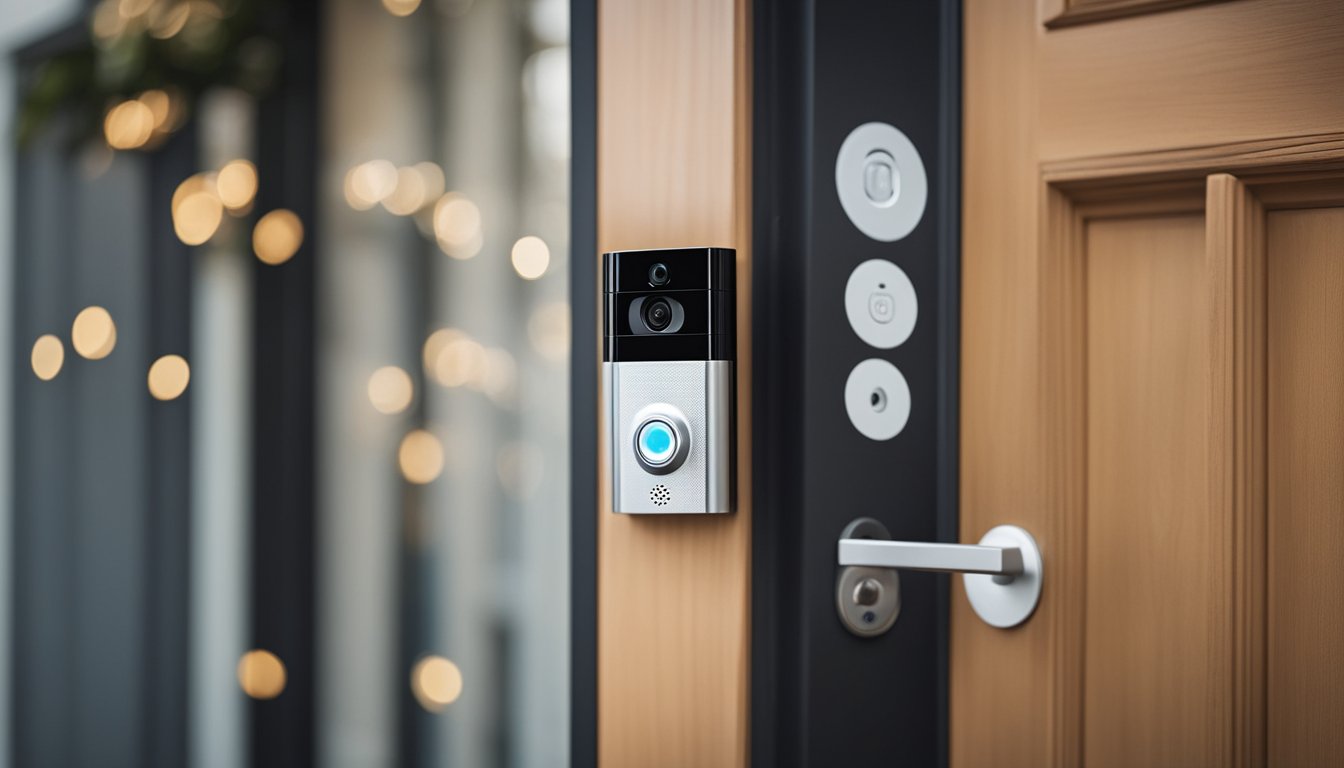Late updated: 30 Sep 2024 08:09
Written by: Elena Prescott
Enhancing Home Security With Smart Doorbells: A Comprehensive Guide
In today’s increasingly connected world, fortifying our home security has never been more straightforward or essential. Smart doorbells play a pivotal role in enhancing safety by offering features such as video monitoring, two-way audio communication, and motion detection. These innovative devices provide us with real-time insights into our doorsteps, enabling immediate responses to potential security threats.

We often wonder how best to integrate smart home devices into our lifestyle. Smart doorbells stand out not only for their cutting-edge features but also for their ease of use and seamless integration with other systems. This article aims to demystify the process of selecting the right smart doorbell that meets our individual security needs while adding an extra layer of convenience and peace of mind.
The market is abundant with options, each promising unique features and benefits. From wireless models to subscription-free options, there are smart doorbells that fit every requirement and budget. Join us as we explore these devices that promise to transform the security of our homes and the way we monitor and control our most important spaces.
Key Takeaways
- Smart doorbells enhance home security with real-time video monitoring.
- Choosing the right model involves considering features and integration.
- These devices are user-friendly and offer varied options to suit different needs.
Key Features of Smart Doorbells
Smart doorbells offer a range of innovative features designed to enhance our home security and integrate seamlessly with other smart home systems. From optimised video quality and night vision to reliable motion detection and audio, these features ensure effective monitoring and responsiveness. Understanding storage solutions and installation considerations is also crucial for maximising the benefits of these technologies.
Optimising Video Quality and Night Vision
A crucial feature of smart doorbells is video quality, often available in 2K resolution, providing clear and detailed visuals. This high resolution is essential for identifying visitors or potential threats.
Additionally, night vision capabilities ensure our security isn't compromised after dark. Many models now offer colour night vision, which enhances visibility and recognition in low-light conditions, offering an edge over traditional infrared night vision.
Ensuring Reliable Performance Through Motion Detection and Audio
Motion detection remains one of the most valuable features, alerting us to activity near our doorstep. Advanced models can differentiate between humans, animals, and other movements, reducing false alarms.
Equipped with two-way audio, these doorbells allow us to communicate directly with visitors through two-way communication channels. This function not only boosts security but also provides convenience for interacting with delivery personnel or guests without opening the door.
Exploring Storage Solutions: Cloud vs Local
Storage options are an important aspect of smart doorbells. Users can choose between cloud storage and local storage. Cloud storage offers remote access to footage but may require a subscription plan. Some brands offer free cloud storage for limited durations or capabilities.
Local storage, usually via SD cards, doesn't incur monthly fees, but can be limited by space and requires physical access to retrieve footage. Choosing the right option depends on our specific needs and budget.
Installation and Design Considerations
The installation process of smart doorbells can vary significantly across models. It's important for us to understand the requirements, whether it’s a straightforward DIY setup or necessitating professional help.
Design plays a role in ensuring the doorbell complements our home aesthetic while remaining functional. Batteries or wired connections also influence the installation guide and process, which can affect ease of use and maintenance.
Enhancing Compatibility and Connectivity
Compatibility with existing smart home systems is crucial for achieving seamless smart home integration. Many smart doorbells are designed to work with popular platforms like Amazon Alexa or Google Home, facilitating voice control and enhanced functionalities.
App connectivity ensures we have continuous access to our doorbell's features via smartphones, allowing us to receive real-time alerts and manage settings effortlessly. Ensuring strong connectivity verifies that the device remains responsive and reliable in safeguarding our home.
Selecting the Right Smart Doorbell

When selecting a smart doorbell, it's essential to consider a range of factors including security functionality, integration with smart home systems, and cost. Our decision should weigh video quality, additional security features, and compatibility with other devices to enhance home security effectively.
Assessing Smart Doorbell Options for Optimal Security
Choosing the right doorbell begins with assessing its security capabilities. Key considerations include video quality, which ensures clear visuals for accurate identification. A video doorbell with high-resolution and HDR support can make a significant difference.
Field of view is crucial as it determines the coverage area; a wider view offers more comprehensive monitoring. Additionally, motion sensors are vital for detecting activity at the door, providing real-time alerts. Video doorbells like the Arlo and Google Nest models excel in these features, giving us peace of mind knowing that our home entrance is secure.
Considering Additional Features for Enhanced Security
Beyond core features, additional functionalities can further enhance security. Package protection is particularly valuable, as many models offer alerts for package deliveries and theft attempts.
Incorporating a doorbell that supports smart locks is an excellent way to take control of our home access remotely. We should also consider doorbells that integrate with security cameras and provide real-time monitoring for added safety. The Ring Video Doorbell is known for its comprehensive approach to this, offering integrated solutions for heightened security through additional features.
Integrating with Additional Smart Home Devices
Compatibility with smart home devices is a significant advantage. Smart doorbells that integrate seamlessly with our existing smart lights, smart speakers, and other components offer increased convenience.
IFTTT (If This Then That) functionality enables automated actions, like turning on lights when motion is detected. Eufy and Blink Video Doorbells support a wide range of integrations, making them suitable choices for those looking to enhance their smart home ecosystem. By choosing a doorbell that integrates well, we can maintain a comprehensive and convenient home security system.
Balancing Quality with Cost
Finally, the cost of a smart doorbell needs careful consideration. While high-end models provide extensive features, we should evaluate if these align with our needs and budget.
Battery life and power source are important; for instance, battery-powered doorbells might suit renters, whereas hardwired models could be ideal for homeowners. Comparing price and features helps us identify the best video doorbells within our budget. It's about finding the right balance between quality and cost that provides comprehensive security and fits our financial constraints.
Frequently Asked Questions

Smart doorbells have become a popular addition to home security systems, offering features like live video streaming and two-way communication. In this section, we address common queries about their effectiveness and practical installation considerations.
Do smart doorbells act as a deterrent to potential burglars?
Smart doorbells can serve as a noticeable deterrent to intruders. The visible presence of a camera might discourage potential burglars. Knowing they could be recorded often leads them to target less secure homes instead.
What are the drawbacks of installing a smart doorbell at home?
While offering many security benefits, smart doorbells may present privacy concerns. They often require an internet connection, which could lead to hacking risks. Some models also require ongoing fees for video storage services. These factors need careful consideration.
Where is the optimal location for mounting a smart doorbell?
For the best coverage, smart doorbells should be mounted at eye level. Installing them near the main entry provides a clear view of visitors. Ensuring they are not obstructed by décor or overhangs is crucial for capturing effective video footage.
Which smart doorbells provide the best enhancement to home security without requiring a subscription?
Certain models offer robust security features without subscription fees. Look for features like on-device storage or free cloud storage options. Brands like Eufy have options that do not charge for storing recorded footage.
How does a smart doorbell integrate with an overall home security system?
Smart doorbells often connect seamlessly with other security devices. They can integrate with smart home hubs, enhancing security alert systems. Integrating with smart locks and cameras provides comprehensive control and monitoring directly from a mobile device or central system.
Can smart doorbells operate effectively in extreme weather conditions?
Designed to withstand varying climates, many smart doorbells operate well in extreme temperatures. Look for models with high IP ratings for water and dust resistance. Cold and heat resistance ensures reliable performance, whether facing scorching summers or freezing winters.
